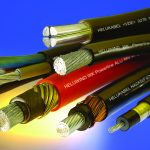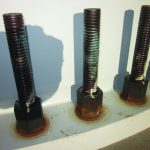Tracked cranes perform nearly all of the new wind farm construction in North America. One challenge is moving the nearly 1,000,000-lb machines between turbines without performing either a full or partial breakdown, which can take days to complete. Lack of proper planning or poor scope definition during the crane walks predictably results in schedule issues and unexpected costs for the most expensive piece of equipment on the site.
Permitting issues are the first to appear, but they can typically be resolved with time and paperwork. It is a safe assumption that a permit either needs to be obtained or at least addressed whenever the crane is in the vicinity of any of the following: roads (local, state, and federal), railroads, wetlands, airfields including glide slopes, and utilities.
All public roads will require permitting or a permission process even for the simplest crossing. Typically these permits address the who, what, where, why, and when, with in-depth details on making sure the contractor fully understands traffic control. An excellent reference when dealing with traffic control issues is the Manual of Uniform Traffic Control Devices (MUTCD). It is recognized by all 50 states and provides the minimum standards that must be met.
Railways have their own special rules in regards to crossing their tracks, and the process is usually quite lengthy and involved. If permission is granted, unique costs such as paying for a railroad employee to “flag” trains as well as additional insurance or bonding may be required while you are operating within their right of way.
Most crane paths will steer away from wetlands for the obvious reasons, but they may be forced to cross small navigable streams. These seasonal streams are not always obvious and often get confused for simple drainage ways or ditches, which may not require permitting. When in doubt it is best to have a professional make the delineation before environmentally sensitive areas are disturbed.
Overhead power lines and utilities can literally add thousands of dollars to your construction costs if not properly thought out or arranged in advance. Due to the high cost and effort required to break down a crane, it is usually more cost effective to simply work with the local utility to temporarily de-energize and remove the line while the crane crosses. The owners of these lines have limited staff and require as much advance notice as possible to coordinate this effort. Simple solutions, such as converting short overhead sections to underground at key crane crossings, can be scheduled well in advance and often with minimal costs. Define whose responsibility it is to coordinate with the utilities and ultimately pay for their time in the construction scope before it becomes an issue.
Even after all of the permitting and overhead utilities are squared away, you may not be able to effectively move your crane across the site because of poor soil conditions. Since the temporary crane paths are not designed to be converted into the permanent roads, you need to make use of what materials you have on hand. This means leaving the surface vegetation in place whenever possible to help bridge the load put down by the crane. Most construction companies will use the appropriate roller just prior to making the crane walks. Care needs to be used to run the vibrator sparingly, however, or not at all since vibrations on native soils tend to aggravate any moisture problems. Also mark out and note where the underground collector lines either intersect or run parallel to the crane path. No matter how good the compaction effort was in the backfilling of these trenches the crane will still further compact those areas, risking potential damage to the new cable.
Regardless of what type of soils the wind farm is sited in, you will inevitably require crane matting to traverse a portion of the crane walks. Both contractors and owners need to fully understand who is responsible for supplying and paying for the placement of those crane mats. Waiting to debate over who should have supplied the mats as a multimillion-dollar crane is stuck is going to cost everyone money in the long run. Many times it is well worth the expense to have crane mats on hand should inclement weather require them. There is a thriving secondhand market for crane mats, where used mats can be purchased and resold again at the project’s end with only minimal net cost. With a little upfront due diligence, most of the risks associated with the crane walks can be eliminated before the main crane ever hits the site.





































